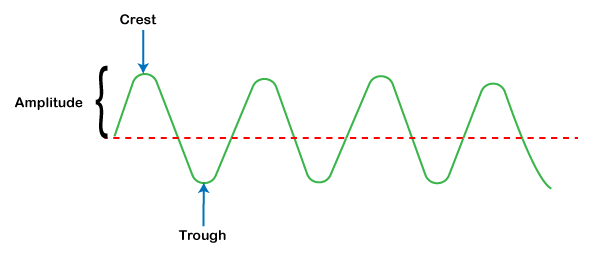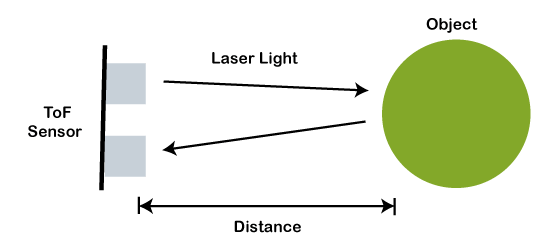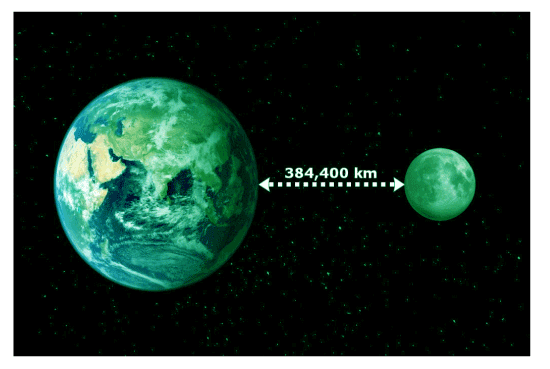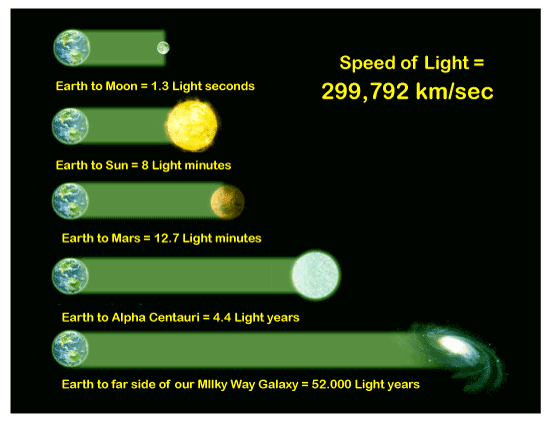Speed of LightSpeed of light is defined as the speed of light rays in a vacuum. It is a fundamental quality and is used in various concepts in physics. The speed is equal to 299, 792, 458 m/s. As the name implies, speed of light is commonly interpreted as the speed related to light only. It is also the speed of electromagnetic radiations, gravitational waves, and massless particles travelling in vacuum. The speed does not depend on the speed or position of the source object. Here, we will discuss the following topics: Units of speed of light Famous equations History Propagation of light Wave that travels at almost the speed of light Time of Flight Applications of speed of light UnitsThe speed of light is denoted by c, where 
It is the exact value of the speed of light represented in the unit of meter per second. In numerical and various applications, the value of speed of light is approximately represented as: 
According to the International agreement, the speed of light is represented in the unit of meter per second. The speed of light in miles per seconds is represented as 186, 282miles/s and approximately given by: 
Similarly, we can represent the speed of light in other units as well. Famous EquationsThe speed of light (c) appears in many famous equations. Let's discuss some of the most common equations. Mass - EnergyMass Energy relation is given by: 
Where, E is the energy in Joules. M is the mass in kg. C is the speed of light in a vacuum. The speed of light is considered as a constant because its value is fixed. M is the rest mass and is measured when the body is in rest. Massless particles are free electrons and photons. The rest mass of the free particles has both momentum and energy, while the rest mass of photons is zero. Rest mass is also known as invariant mass. The relation of Energy-mass relation was described by the German physicist Albert Einstein. Speed- refractive indexThe relationship between the speed and refractive index is given by: 
Where, n is the refractive index c is the speed of light in a vacuum v is the speed of light in the substance The speed- refractive index relation has applications in optics. Speed- wavelengthThe relationship between speed and wavelength is: 
Where, v is the frequency c is the speed of light in a vacuum Lambda is the wavelength We can also substitute the speed of light in the Energy-frequency relation, given by: 
History
Propagation of lightLet's first discuss the concept of the speed of light in classical and quantum physics. The speed of light in classical physics is defined as the EM wave. Classical physics is a theory of physics that includes classical mechanics and the theory of relativity. Maxwell's equation gives its behavior of the EM field. According to classical physics, the speed of the electromagnetic waves in a vacuum is given by: 
Where, 
In quantum physics, the light is described as the excitation (quanta) called photons. Quantum physics is modern physics that deals with the study of matter and energy. Light propagates at a constant speed in vacuum. But, the case is not same for other types of medium. Let's discuss the propagation of light in various mediums. Propagation of light in a mediumLight propagates at a different speed in a different medium. It means that the speed of light is not equal to c in medium other than vacuum. A plane wave comprises crests and trough as shown below: 
The propagation of individual crests and troughs of a plane wave is termed phase velocity, denoted by Vp. The velocity of the whole envelope of a wave propagating through space is called group velocity, denoted by Vg. Let's discuss the propagation of light in various mediums, such as air, water, glass, diamond, etc. SpaceLight travels at a speed of 3 x 10^8 meter per second in free space. For example, The light from sun reaches the Earth in the time of only 8 minutes and 20 seconds. It means that the light travels the distance of 150 million kilometers in just 8 minutes. Thus, we can say that the light propagates at the same speed as in a vacuum because space has very low pressure and density. It can be approximately called as a perfect vacuum. The speed of light in space = speed of light in the air/ refractive index on space V = c / n (n = 1 for space) So, v = c /1 = c Hence, the speed of light is same as the speed in the vacuum. AirThe speed of light in air is slower than the speed in the vacuum. We can say that the speed of light in air is 1.0003 times less than the vacuum. It is because the refractive index of air is 1.0003. It is approximately equal to 299 702 547. Difference = Speed of light in vacuum - speed of light in air = 299 792 458 - 299 702 547 = 89 911 m/s It means it is 89, 911 meter per second slower than that of speed in the vacuum. WaterThe speed of light in water is also lower than the speed in the vacuum. The speed of light in water = c / n = 300 000 km per second/ 1.333 (refractive index of water) = 225 000 kilometer per second or 2.25 x 10^8 m/s. Difference = Speed of light in a vacuum - speed of light in water = Approx 75, 000 meter/second. GlassThe refractive index of glass is 1.5. The speed of light in glass = c / n = 300 000 km per second/ 1.5 = 200 000 kilometer per second or 2 x 10^8 m/s. Difference = Speed of light in a vacuum - speed of light in the glass = Approx 100, 000 meter/second DiamondThe refractive index of glass is 2.4. The speed of light in water = c / n = 300 000 km per second/ 2.4 = 125 000 kilometer per second or 1.25 x 10^8 m/s. Difference = Speed of light in vacuum - speed of light in water = Approx 175, 000 meter/second Optical fiberLight in an optical fiber propagates like an electromagnetic wave, either is single mode or multiple modes. The refractive index of single mode fiber or multiple modes depends on various factors. The average estimate of the refractive index is around 1. 467. It means, the speed of light in optical fiber = speed of light in the vacuum/ refractive index of the optical fiber. = 200, 000 km/second. We can also write it as: 186, 282 miles per second/ 1.467 = 124, 188 miles/ second. Ways that travel at almost the speed of lightHere, we will discuss three ways that accelerate with the speed almost equal to the speed of light.
Electromagnetic fieldsThe process that accelerates the particles at the relative speed works with the EM fields. It has two components, namely electric fields and magnetic fields. These two components work together to accelerate the particle throughout the universe at a relative speed. Here, relative speed signifies Einstein's theory of relativity. It describes how particles move through space. It is also a concept used in the understanding of the speed of light. Based on the theory of relativity, Einstein showed that the speed of light is the same in a vacuum irrespective of the speed of the observer. Particle accelerators used in laboratories accelerate the charged particles at speed up to 99.99 % of the speed of light. Magnetic ExplosionsMagnetic fields are present everywhere, ranging from the rotation of a motor with the help of a magnet to spanning the solar system. The charge particles are present in the spiral form around the object. The rapid change in the magnetic field generations results in the creation of the electric field. It causes the charge particles to move at high speed. Wave-particle InteractionThe wave-particles interaction is defined as the interaction of accelerated particles with electromagnetic waves. The particles gain energy when they bounce back and forth between the electromagnetic waves. The wave-particle interaction is essential for a scientist to understand. The interaction accelerates the particles at the speed that can damage the satellites in space. Time of flightTime of flight is a process to measure the time taken by the object, wave, or particle to cover a particular distance by traveling through the medium. The wave can be acoustic, light, or electromagnetic. This measurement can be further used to calculate the value of other parameters, such as flow rate, path length, velocity, etc. The time of flight of a projectile is given by: 
The function of ToF (Time of Flight) sensor is shown below: 
ApplicationsSpeed of light is mainly used for the measurement of extensive distances. It also applies to the astronomical scale. Let's discuss the applications of speed of light. Small Scale applicationsThe speed of light is used in supercomputers (high-level computers) to check the data limit between two processors. For example, A signal travels 30cm in one cycle if a processor is operating at the frequency of 1GHz (or 1024 MHz). Thus, the distance between the two processors should be the least. Distance of the EarthAs discussed, the speed of light in various mediums varies. For example, the speed of light in optical fiber reduces to 35%. The circumference of Earth is around 40, 075 km, while the speed of light is 300 000 km/s. It means that the light can travel the circumference of the Earth 7.5 times in 1 second. Similarly, speed of light is used to calculate the distance between the earth and moon, earth and sun, etc. For example, the speed of light can also calculate the distance between Earth and the moon. Let's discuss how? The speed of light is already known and is fixed. The duration of light hitting and reverting is measured. By using these two parameters, the distance between the earth and moon can be calculated. The distance between Earth and moon is shown in the below image: 
AstronomyThe speed of light helps astronomers to infer the galaxies, stars, etc., in the universe. The speed of light is the fastest speed. It means no other speed is greater than the speed of light. The communication between the Earth and spacecraft is bounded to the speed of light, which is a universal speed limit. Let's discuss how communication is possible with spacecraft. The spacecraft has an inbuilt transmitter and receiver. The transmitter transmits the signals, while the receiver receives the signal from the source. The signal is in the form of radio waves. The speed of radio waves is similar to the speed of light in a vacuum. The radio waves are transmitted by the antenna that contains information. The spacecraft receives the radio waves and transmits them back to the antenna with information, such as the spacecraft position. It is due to the small antenna present on the spacecraft. Thus, the communication takes place between the antennas on the Earth and the small antenna of the spacecraft. Light years are used to represent the astronomical units. The distance is around 9461 billion kilometers. For example, Sirius star is 8.611 light-years away from the Earth. Consider the below figure: 
High-frequency tradingThe speed of light has become an essential part of high-frequency trading. It means that the speed of light acts as a medium to conduct trade in approx one 64 millionths of a second. It offers various advantages, such as efficient data communication, facilitating large trades, etc. The transaction between stock exchanges has become more rapid due to the use of the speed of light. Such transactions are made in just a fraction of seconds. For example, traders are now moving towards the use of microwave communication between hubs. It is because the speed of microwave signals is approximately equal to the speed of light. In another medium, such as optical fiber, the speed may reduce up to 30-40%.
Next TopicWhat is Cron Job
|
 For Videos Join Our Youtube Channel: Join Now
For Videos Join Our Youtube Channel: Join Now
Feedback
- Send your Feedback to [email protected]
Help Others, Please Share









